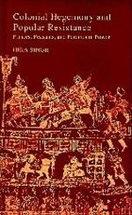Dec 29, 2025
Dec 29, 2025
 Dr. Hira Singh is an academic grappler who enjoys pinning unwary and unseasoned fellow scholars down. This feat of his constitutes the principal attraction of his pugnacious little tome composed in a racy, often rancorous, but at times eminently readable style. Colonial Hegemony and Popular Resistance presents a case study from Rajasthan in the 1920s, foregrounding the active struggle of the kisans [peasants] in “the dynamics of colonial dominance and its dissolution with particular reference to British colonial rule in India.” The book’s theoretical framework is a spirited critique of the political economy theory of the West postulating the centrality of colonial capitalism as the solvent of all pre-capitalist political and economic structures in the colonies. This Western presupposition is predicated on an Eurocentric premise that modern colonial societies were constructed on the debris of their indigenous feudal foundations, that feudalism was backward-looking and capitalism progressive, in that it served as the motor of modernization.
Dr. Hira Singh is an academic grappler who enjoys pinning unwary and unseasoned fellow scholars down. This feat of his constitutes the principal attraction of his pugnacious little tome composed in a racy, often rancorous, but at times eminently readable style. Colonial Hegemony and Popular Resistance presents a case study from Rajasthan in the 1920s, foregrounding the active struggle of the kisans [peasants] in “the dynamics of colonial dominance and its dissolution with particular reference to British colonial rule in India.” The book’s theoretical framework is a spirited critique of the political economy theory of the West postulating the centrality of colonial capitalism as the solvent of all pre-capitalist political and economic structures in the colonies. This Western presupposition is predicated on an Eurocentric premise that modern colonial societies were constructed on the debris of their indigenous feudal foundations, that feudalism was backward-looking and capitalism progressive, in that it served as the motor of modernization.
17-Jun-2014
More by : Dr. Narasingha Sil

|
Thank you, Sarika, for appreciating my review. |

|
a good review |